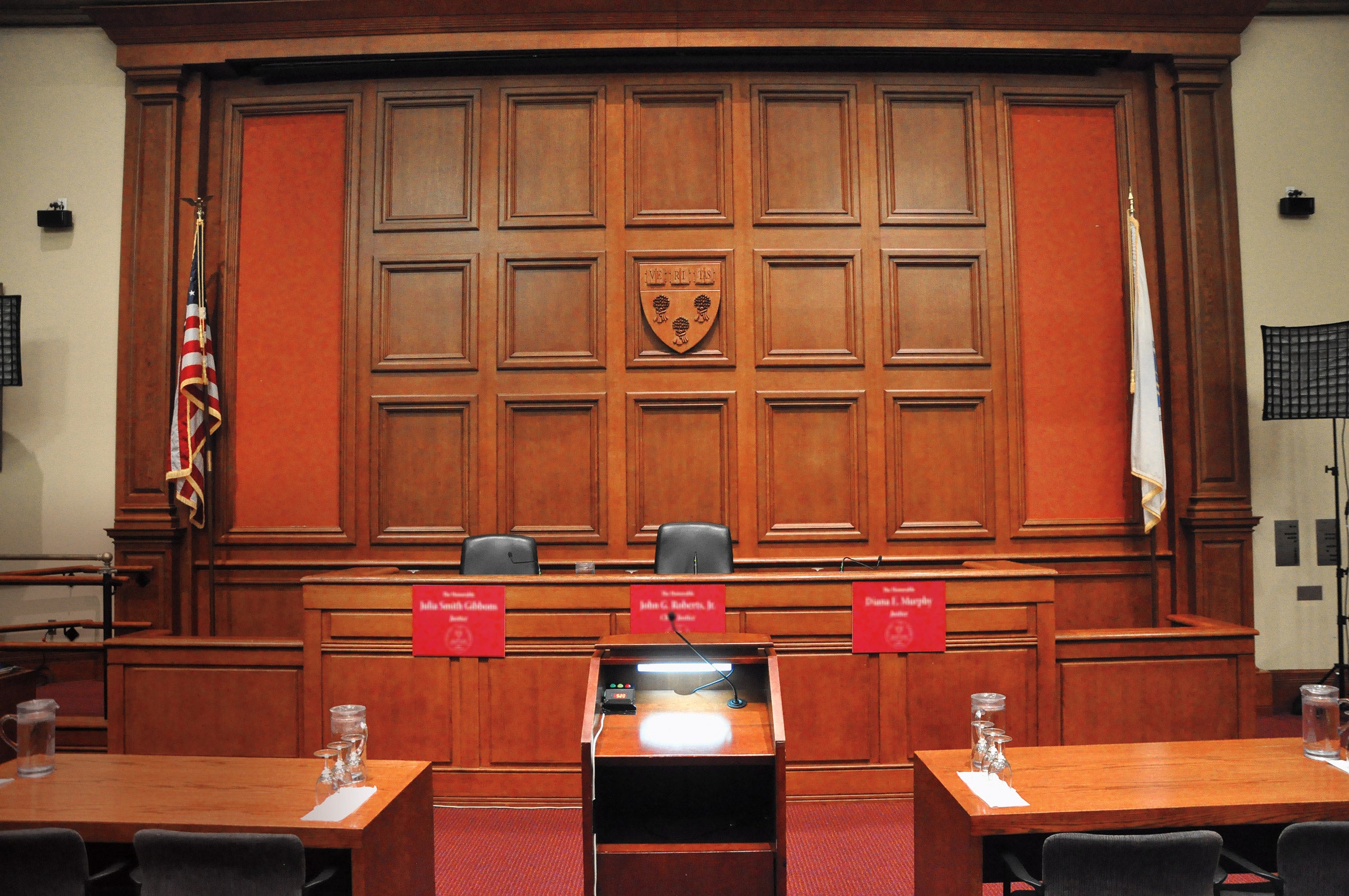In January, it was as if the U.S. Supreme Court were playing host to a tournament of champions for past winners of the Ames Moot Court Competition.
The three attorneys who argued Midland Funding, LLC v. Johnson had all been on teams that won the Ames Competition within four years of each other at Harvard Law School.
The setting was familiar for two of them: Sarah Harrington ’99 of the U.S. solicitor general’s office and Kannon Shanmugam ’98, who argued for the petitioner, were each making their 19th appearance before the high court. (Both Harrington and Shanmugam returned a 20th time later in the term.)
In contrast, Dan Geyser ’02 made his debut in the case addressing a question involving the Fair Debt Collection Practices Act and bankruptcy code, although he’d previously argued before most of the federal circuits.
“It’s still the same type of exercise, a conversation with incredibly bright jurists, but it’s obviously a little bit different in terms of the Court’s focus and the setting,” said Geyser, a Dallas-based partner at Stris & Maher, a firm founded by three Ames finalist teammates: Peter Stris ’00, Brendan Maher ’00 and Elizabeth Brannen ’00.
Geyser’s Ames teammate Justin Dillon ’02 happened to notice the coincidence while visiting the law school campus to teach a trial advocacy class. Dillon, a partner at KaiserDillon in Washington, D.C., says he still can’t believe his name is on a plaque of Ames winners in Langdell Library and goes to look at it every time he’s on campus.
Harrington and Shanmugam similarly remember Ames as a formative moment in law school and their subsequent careers.
Harrington remembers the Ames Competition as her first chance to do appellate litigation and write a brief.
“I really enjoyed it; we had a great time,” said Harrington, who began her career in the Justice Department’s Civil Rights Division before moving to the solicitor general’s office in 2009. “The lasting friendships were the best thing I got out of the experience.”
Shanmugam, who preceded Harrington at the solicitor general’s office, remembers Ames as “by far the best experience I had at the law school”—one that got him thinking about a career in appellate litigation. His career has included clerkships for both 4th Circuit Judge J. Michael Luttig and Justice Antonin Scalia ’60 and stints at both Kirkland & Ellis and Williams & Connolly, where he’s now a partner.
Both Harrington and Shanmugam keep the quill pens given each time they argue before the Court close at hand in their offices. Harrington has hers in a flower vase on her desk, which she said is “getting kind of full right now.” Shanmugam stores them in a mug in a corner of his office.
Harrington says she doesn’t get as nervous as she did the first time but arguing before the Supreme Court will never be “old hat.”
“I don’t think I’ll ever stop feeling nervous or excited about it,” said Harrington. “It’s an intimidating setting no matter how many times you’ve been there.”
Similarly, Shanmugam said, “It becomes more familiar, but it’s never easy and it’s always a challenge.” Before each argument, he does two moot courts and carves out two to three weeks of intensive preparation.
Harrington and Shanmugam had previously squared off in a 2014 case. In the audience that day were all six members of Harrington’s Ames team, including Adam Szubin ’99, who recently served as the acting secretary of the Treasury.
Harrington also argued on the same side as classmate Danielle Spinelli ’99 earlier this year in a different case.
“The community of regular Supreme Court practitioners is pretty small, so the more you do it, the higher the chances you’ll run across the same people again,” Harrington said. “It’s always fun when you have a friend on your side or the other side.”
Shanmugam said Geyser “did a superb job for his client; so did Sarah. I thought they were terrific. I hope they weren’t too terrific.”
